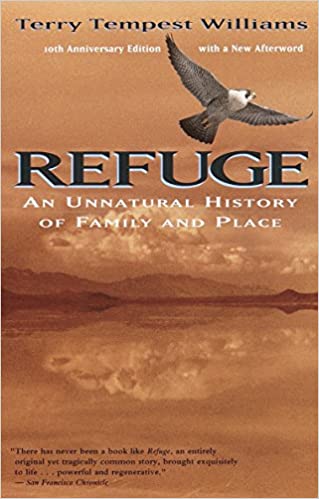
 I love it when a book becomes a place, an alternate reality I can dwell in.
I love it when a book becomes a place, an alternate reality I can dwell in.
That’s what happened as I was reading Terry Tempest Williams’ now classic memoir Refuge – An Unnatural History of Family and Place. I picked it up in a friend’s guest room last November and read the first few chapters during my visit. They stayed with me. Maybe because my friend’s house in Iowa City was blissfully serene and thus a refuge in itself from my otherwise hectic family life, but also because Refuge is very much about place, namely Great Salt Lake and the desert of western Utah.
It’s a testament to Williams’ skill as a writer that I stuck with the birds even though I am reportedly not an animal lover.
Refuge is also very much a book about a family, and to a smaller degree an exploration of Mormon culture and history.
I was struck by the book’s immediacy.
Williams never leads the reader anywhere. Instead, she starts wherever she is.
The book is elaborate and unique in its organization: Chapters are named for birds, and as time markers we are offered the lake level.
The Great Salt Lake is going through a flooding period during the early 1980s, the time Williams is capturing. It begins with:
BURROWING OWLS
lake level: 4202.70′
More than once I leafed through the book, again trying to get my bearings, looking for a time marker I could understand: a date. But ultimately we cannot measure nature and life, no matter how hard we try. I think Williams was trying to show that.

Lovely post, and the point about the missing transitions and how they mirror her theme is intriguing. I have not read this but admire her essay "Clan of One-Breasted Women" about the cancer in her family and how it may relate to nuclear testing.
What a great post- it makes me want to get my hands on this book. You had me in the first paragraph!!!